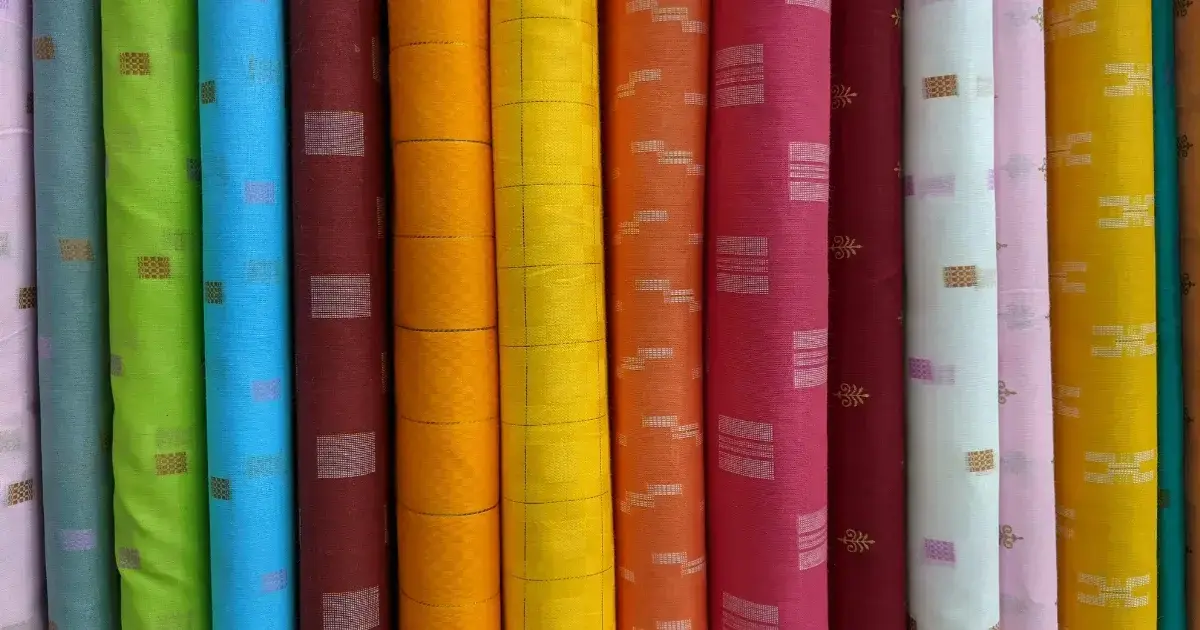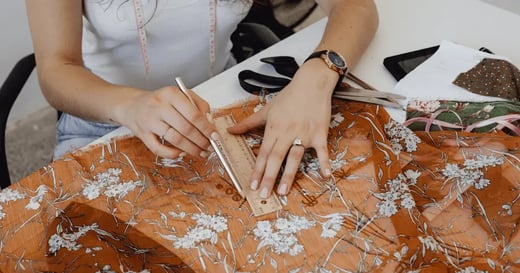
A customer walks into your shop looking for a new trending fabric that’s all over Instagram, only to find it sold out. Your supplier says your next shipment of that bestseller is delayed another two weeks. Meanwhile, you’ve got three full shelves of last season’s prints you can’t sell.
If this scenario sounds familiar, you’re not alone. Many quilt shops struggle with vendor management challenges. Unpredictable deliveries, inventory imbalances, and communication breakdowns with suppliers can all cut into your bottom line and frustrate your customers.
The solution is to improve relationships with fabric suppliers and develop a strategic approach to retail vendor management. But that task is much easier said than done.
This post covers the actionable strategies for building vendor relationships that work for your business.
Understanding Retail Vendor Management for Quilt Shops
Before we explore our retail vendor management tips, let’s lay out some of the unique challenges of supplier relationships for quilt shops. You need to understand these challenges inside and out if you want to set up your processes for vendor management success:
- Fractional yardage: Unlike other retail categories, you need to track and sell fabric down to the eighth of a yard. Fractional inventory can result in inventory challenges that most retail systems aren’t set up to handle.
- Seasonal collections: The quilting industry revolves around spring and fall collection launches. You’ll need to coordinate inventory and floor space for multiple manufacturers to satisfy your vendors and customers.
- Balancing trendy vs. timeless inventory: You need to stock the latest designer collections, but you can’t abandon the reliable basics that quilters need on a regular basis.
- Multiple supplier categories: Beyond fabric, you're coordinating relationships with pattern publishers, notions suppliers, book distributors, and specialty tool manufacturers — each with different ordering processes and delivery schedules.
When vendor management works smoothly, you can avoid stockouts, use your floor space wisely, and keep customers happy. When it doesn't, you're stuck explaining empty shelves while watching potential sales walk out the door. The strategies ahead will help you transform the way you manage your vendors.
Tip 1: Diversify Your Fabric Supplier Portfolio
Our first tip is to not put all your eggs in one supplier basket. When you have only one distributor for a given product category, a production delay or shipping issue can leave you scrambling to fill your empty shelves.
Instead, you want to build relationships with three to four primary suppliers. Look for suppliers with different strengths and diverse offerings. Maybe one distributor has the best quilting cottons, and another is known for offering modern prints from up-and-coming artists. Focusing on suppliers with overlapping catalogs and different specialties allows you to offer customers variety while protecting yourself from supply chain issues.
Having multiple supplier relationships also gives you negotiating power. When vendors know they're competing for your business, they're more likely to offer competitive pricing, better payment terms, or exclusive arrangements.
Related Read: How To Source Fabric for Your Store: 3 Options
Tip 2: Implement Fractional Yardage Tracking Systems
Precision matters for quilt shops. When a customer wants 2.75 yards of fabric, you need to be able to reliably track that sale and log how much fabric is left on the bolt afterward. Traditional inventory tools rarely have the features you need to track fractional units.
Instead, invest in an inventory tracking solution that can handle sales down to an eighth of a yard. This precision is key to ensuring you don’t accidentally oversell a bolt of fabric because your inventory system rounded down to the nearest half-yard on the last sale.
This level of tracking helps with vendor reordering, too. Instead of guessing how much to reorder based on vague "running low" observations, you'll have precise data showing exactly how much you've sold and how much remains.
Tip 3: Establish Seasonal Ordering Calendars
Major fabric collections tend to launch in the spring and fall, coinciding with quilt market shows. Understanding and planning around these cycles is crucial for keeping your store relevant and your inventory fresh.
Start your seasonal planning four to six months before you want merchandise on your sales floor. This timeline accounts for production schedules, shipping delays, and the coordination required across multiple suppliers. (In other words, if you want new spring collections available in March, begin planning and placing orders in October.)
Remember: Different suppliers operate on different schedules. Some smaller manufacturers might need longer lead times, while others can turn orders around quickly. Map out each vendor's timeline to create a master calendar for your store that helps you keep tabs on everything.
Tip 4: Negotiate Favorable Return Policies
Fabric can turn from slow-moving inventory into dead stock overnight. Unlike clothing, which gradually goes out of style, fabric trends can change on a dime, leaving you stuck with suddenly dated bolts. Our fourth vendor management tip is to take the time to negotiate return policies that protect your business.
Many vendors offer end-of-season return privileges where you can send back unsold seasonal fabrics for credit toward new collections. These arrangements help you take calculated risks on trendy prints without fearing you'll be stuck with dead inventory.
Related Read: How To Increase Sales in Retail: 7 Quilt Store Strategies
Some suppliers also offer credit programs, in which unsold merchandise earns trade credits that you can apply to future orders rather than cash refunds. While this approach is less ideal than an outright return, the arrangement can still protect your cash flow by giving you the chance to refresh your inventory.
Don’t be afraid to ask for better terms. Suppliers want your business, which means they often have more wiggle room in their policies than they let on. The worst they can say is “no,” so it never hurts to ask.
Tip 5: Think Beyond Fabric
Sure, fabric drives most quilt shop sales — but you shouldn’t ignore the profit margin potential in related product categories. Consider patterns, notions, tools, and quilting books. These products often have higher margins than fabric and can give your store a leg up over competition that forgets to invest in these key companion products.
Here are some ideas to get you started in diversifying your suppliers beyond fabric:
- Negotiate arrangements with specialty tool manufacturers or book publishers.
- Host classes and workshops to showcase new products.
- Develop relationships with quilting book authors for signing events, reading groups, or technique demonstrations .
- Partner with thread companies to offer color-matching services.
- Coordinate with quilting magazine publishers to host subscription drives, pattern releases, or meet-and-greet events with contributing designers.
- Connect with specialty rulers and template manufacturers to provide hands-on workshops.
These unique offerings help set your store apart from the big-box stores or online retailers that sell mostly fabric.
Tip 6: Monitor Vendor Performance
The next tip for mastering retail vendor management for your quilt shop is to monitor vendor performance. Monitoring performance data helps you make better decisions about your suppliers.
Related Read: 24 Key Retail KPIs To Track in Your Fabric Shop
Track three critical metrics for each vendor: on-time delivery rates, order accuracy, and fill rates.
On-time delivery matters enormously for seasonal merchandise and special orders. Order accuracy affects customer satisfaction when colors don't match or quantities are wrong. Fill rates show how often suppliers can actually deliver what they promise, versus sending partial orders or backordered items.
Create simple vendor scorecards that track these metrics over time. Then, use this data during vendor negotiations. Suppliers who deliver exceptional service deserve consideration for exclusive arrangements, while underperformers need to improve or risk losing your business.
Tip 7: Develop Crisis Management Protocols
No matter how well you plan, crises and supply chain disruptions are, to an extent, unavoidable. Manufacturing delays, shipping problems, natural disasters, and unexpected demand spikes can all throw you for a loop if you’re not prepared.
Identify backup suppliers for your most critical items, like basic fabrics and supplies. While you might prefer ordering from your primary vendor, knowing you can get white-on-white prints or essential notions from alternative sources is crucial for keeping the lights on when something goes wrong.
Next, keep some safety stock for your bestselling basics. This buffer inventory helps you weather temporary supply disruptions without frustrating your customers. The investment in extra inventory pays for itself and saves on promotion costs when you're the only shop in town with the supplies customers need.
Finally, develop customer communication strategies for when delays occur. Be proactive about informing customers when special orders are delayed, and offer alternatives when possible. Many quilters will wait for specific items if they know you're actively working to get them — you just need a plan in place for honest communication.
Related Read: How To Use a Fabric Inventory Spreadsheet: 8 Pro Tips
Streamline Your Retail Vendor Management With the Right Tools
Retail vendor management is a daily struggle for many stores, and reversing this pattern doesn’t happen by accident. If you want to master retail vendor management for your quilt shop, you need the right strategies and the right technology.
The seven tips we covered in this post will all help get you on the right track — but without the right tools, managing these tips is a headache. When you invest in inventory and vendor management tools designed for fabric retailers, you can form better relationships, maintain optimal inventory levels, and keep customers happy.
Generic retail systems can't handle the complex supplier relationships and inventory processes of modern quilt shops. You need specialized features designed for stores like yours in order to succeed. When you invest in the right tools, you’ll spend less time wrestling with inventory spreadsheets and more time growing your business.
Ready to see how the right POS system can revolutionize your vendor management? Explore Like Sew's pricing packages and build your ideal solution today.


 by
by 







